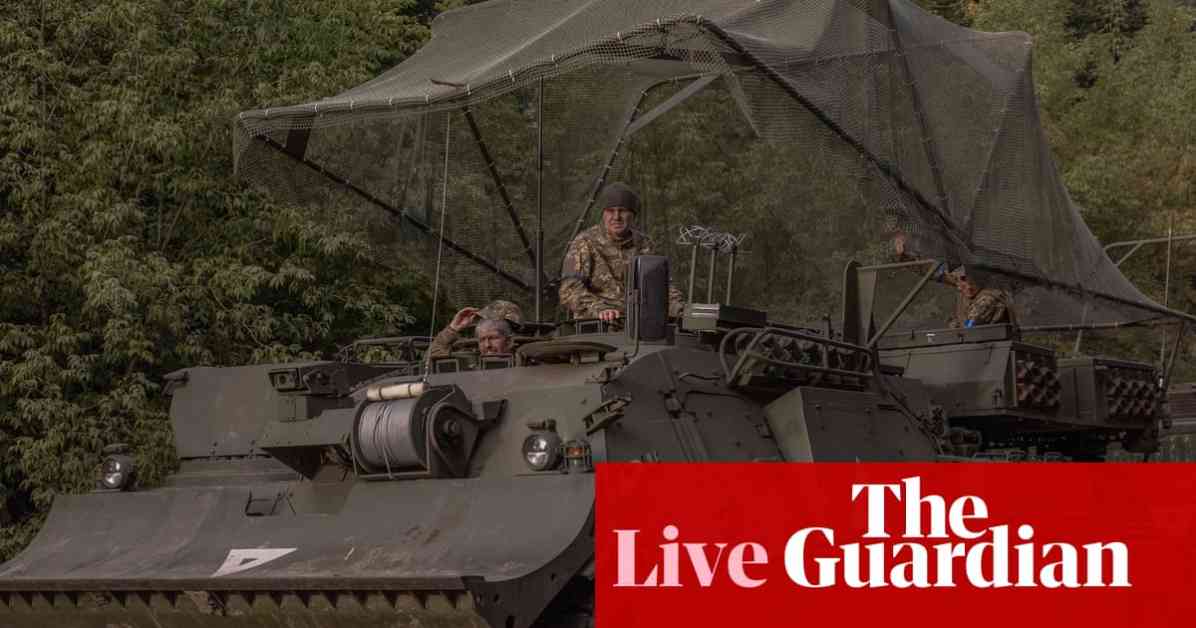Ukraine’s Kursk Incursion: Targeting Russia with Drones
Ukraine’s incursion into the Kursk region of Russia has sparked tensions and military engagements along the border. The Sudzha crossing, where Ukrainian troops initially pushed into Russian territory, remains a focal point of the conflict. Nerves are tense as both sides maneuver and attempt to assert control over the area.
The journey from the Ukrainian city of Sumy to the Russian border is a short one, taking only about three-quarters of an hour. The Sudzha crossing, now approximately 5 miles from the current frontline inside Russia’s Kursk oblast, is a strategic location that has seen significant military activity. Ukrainian forces have managed to maintain control of the crossing, despite Russian attempts to push them back.
In a creative attempt at self-defense, Ukraine has targeted Russia with drones, utilizing advanced technology to gain an advantage in the conflict. The use of drones in warfare has become increasingly common, allowing for precision strikes and reconnaissance operations that can disrupt enemy forces. The ongoing incursion into Kursk demonstrates Ukraine’s determination to defend its territory and protect its people from external threats.
Russian Response and Escalation
Russian authorities have scrambled to quell Ukraine’s week-long incursion into the Kursk region, deploying missiles, drones, and airstrikes in an attempt to regain control. The use of military force by Russia has escalated the conflict, leading to intense battles and a high level of casualties on both sides.
Despite Russian efforts to push back Ukrainian forces, Kyiv continues to advance in the Kursk region, capturing key settlements and expanding its control over the territory. The evolving situation on the ground has forced both sides to reassess their strategies and tactics, as the conflict shows no signs of abating.
The destruction of Ukrainian drones by Russian forces highlights the technological aspect of modern warfare, where unmanned aerial vehicles play a significant role in reconnaissance and combat operations. The use of drones in the conflict has raised concerns about civilian casualties and the escalation of hostilities, as both sides seek to gain an advantage through advanced military capabilities.
International Response and Diplomatic Efforts
The conflict in the Kursk region has garnered international attention, with countries around the world closely monitoring the situation and offering support to Ukraine. Diplomatic efforts to de-escalate the conflict and find a peaceful resolution have been ongoing, but the volatile nature of the situation has made progress difficult to achieve.
The meeting between Andriy Yermak, the head of the Ukrainian president’s office, and James O’Brien, the US assistant secretary for European and Eurasian affairs, underscores the importance of international cooperation in addressing the crisis. The US has expressed solidarity with Ukraine and called for increased sanctions pressure on Russia to deter further aggression.
German prosecutors issuing an arrest warrant for a Ukrainian man over the sabotage of the Nord Stream gas pipelines adds another layer of complexity to the conflict. The involvement of external actors in the region’s destabilization highlights the broader geopolitical implications of the crisis and the interconnectedness of global security challenges.
In conclusion, Ukraine’s incursion into the Kursk region and its targeting of Russia with drones represent a significant escalation in the ongoing conflict between the two countries. The use of advanced military technology and tactics has intensified the fighting and raised concerns about the potential for further escalation. The international community must work together to de-escalate the crisis and find a peaceful resolution that respects the sovereignty and security of all parties involved.












